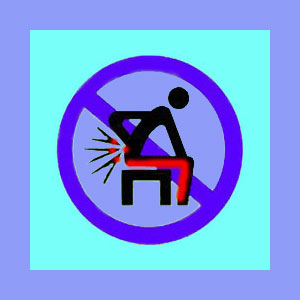
Back pocket sciatica is a combination of medical fact and folklore mythology. The idea here is that sitting for an extended period of time with some object in your back pocket, such as a wallet, will cause sciatica. This theory is partially true, but not to the extent often accepted by many sciatica sufferers.
This essay will unveil the facts of suffering sciatica from sitting with an object in a rear pocket. We will also detail many misconceptions which are mistakenly embraced by some patients.
What is Back Pocket Sciatica?
Many people carry a wallet or other object in their rear pants pocket. When they sit, the object places uneven pressure on the buttocks, possibly causing undue stress to the sciatic nerve. The shape and feel of the object is quite important, since large soft objects are unlikely to yield the same results as smaller harder objects.
Additionally, sitting on a soft surface will diminish the effects significantly, while sitting on a hard chair will intensify possible symptoms.
Effects of Seated Sciatica
Sitting for an extended time frame can cause sciatic nerve pain even without an object in the rear pocket. However, an ideally placed object can focus the pressure on the muscles over the sciatic nerve, causing considerable discomfort in some people.
That being said, the effects of this type of sciatica pain are unlikely to last long and should resolve within a short time frame, especially once the person can get up and walk or stretch.
Suffering with chronic sciatica from sitting with a wallet in your pocket is highly unlikely, unless you are talking about a person who sat for hours a day over the course of decades, all on a hard surface. In this case, there may be actual nerve damage which can enact lasting symptoms, but this case scenario is very unlikely to exist outside of theory.
Guidance for Back Pocket Sciatica
I think at this point it is virtually common knowledge that you should not sit with objects in your pocket. Also, it is not a good idea to sit for hours uninterrupted in any event. People who must sit to work should always take regular breaks in order to maintain their lower body health.
Sitting is not inherently bad for the back, but is known as an intensifier for many existing lower back pain syndromes. Science typically explains this by saying that sitting increases pressure in the lumbar spine, which indeed it does. However, this explanation falls flat when statistics show that just as many people enjoy relief from sitting, compared to standing, as those who experience pain while seated. This makes alternate explanations far more plausible.
Long periods of sitting are most commonly associated with work or driving. These are 2 of the most stressful situations in our lives. It is no surprise that sitting is a catalyst for psychogenic sciatica. This is true with or without any object in a back pocket.
Additionally, some doctors, such as our own Dr. Mitchell Yass, cite many back and sciatica symptoms to be sourced from muscular issues and imbalances and not spinal concerns. Sitting can tighten the muscular attachments and create stress and pain when a person stands after an extended duration of seated posture.





